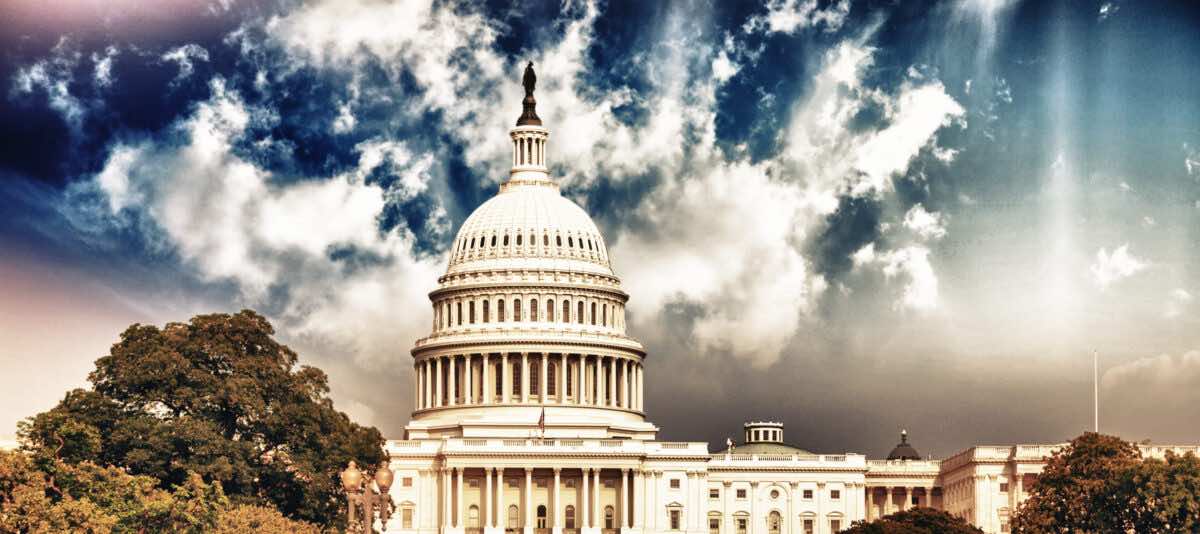Biden’s Massive Parole Schemes Have Their Own ‘Kill Switch’
Many of those concerned about the implications of the administration’s release of millions of largely unvetted aliens who have entered the United States illegally — largely but not exclusively at the Southwest border — fret that there is no way that any future administration will ever be able to remove any of them. Fear not — most of Biden’s release policies have relied on DHS’s limited parole authority, and that authority comes with its own “kill switch”, defined in one dictionary as “a security mechanism used to shut down a device immediately in the case of an emergency” — and we clearly have a significant border emergency.
Two Million-Plus Releases. As of the end of March, DHS under the Biden administration has released at least 2,045,992 illegal aliens who were “encountered” by CBP at the Southwest border. I also know that hundreds of thousands of other migrants have been released, but I have no idea how many. Let me explain.
The word “encounter” in this context is the sum of aliens apprehended by Border Patrol agents at the U.S.-Mexico line plus aliens deemed inadmissible (usually because they don’t have proper admission documents) by CBP officers in the agency’s Office of Field Operations (OFO) at the ports of entry there.
Border Patrol releases a monthly tally of the illegal entrants that it has released at the Southwest border (in April, an additional 60,748, bringing the known release total to 2,106,740), but OFO refuses to do so.
In addition, both Border Patrol and OFO send tens of thousands of aliens encountered at the Southwest border monthly to ICE for detention, and ICE, in turn, releases most if not nearly all of them. While ICE publishes detention and (unlike OFO) release statistics, it does not break down monthly release data by border aliens encountered by CBP and aliens arrested and released by its own officers in the interior.
If this all sounds like the administration’s attempting to hide such information from the American people, you’re likely correct.
Fortunately, in August 2021, Judge Matthew Kacsmaryk — the judge assigned to Texas v. Biden, a challenge filed by plaintiff states to the Biden administration’s termination of the Trump-era Migrant Protection Protocols (MPP), better known as “Remain in Mexico” — ordered DHS to provide the court with Southwest border release data from Border Patrol, OFO, and ICE.
Those stats dated all the way back to the day after President Biden’s inauguration, but unfortunately for those concerned about government transparency, the Supreme Court vacated Judge Kascmaryk’s order on June 30, 2022, and the administration last released OFO and ICE Southwest border release statistics on July 15, just before the justices’ judgment became final.
Parole. “Parole” in the immigration context is an authority Congress has granted to the executive branch to enable DHS to release inadmissible aliens into the United States temporarily without formally “admitting” them.
It’s a limited power, however, as the parole statute at section 212(d)(5)(A) of the Immigration and Nationality Act (INA) reveals. In pertinent part, it grants the DHS secretary discretion to “parole into the United States temporarily under such conditions as he may prescribe only on a case-by-case basis for urgent humanitarian reasons or significant public benefit any alien applying for admission to the United States”.
The phrase “urgent humanitarian reasons” has traditionally been interpreted as emergency medical treatment, and “significant public benefit” has been historically read only to cover situations in which the alien’s presence is required in criminal proceedings in the United States, as a witness or defendant.
The problem, as my colleague George Fishman has explained, is that various administrations have dispensed with those “traditional” and “historical” definitions in the past to bring large numbers of aliens to the country notwithstanding the limits Congress has placed on the admission of immigrants.
“Parole+ATD” and “Parole with Conditions”. The Biden administration has employed four massive different parole schemes to funnel illegal migrants into the United States.
At first, the administration was content simply releasing hundreds of thousands of illegal migrants nabbed by Border Patrol at the Southwest border on a rather plain vanilla version of parole, which was eventually refined into something it called “Parole+ATD” — “ATD” in this context referring to costly and largely worthless forms of “alternatives to detention”.
In FY 2022, Border Patrol agents at the Southwest border released more than 378,000 illegal migrants on a purported “case by case basis” on Parole+ATD, and nearly 290,000 more in just the first three months of FY 2023.
DHS largely stopped using Parole+ATD around February (when just 27 Southwest border migrants were released on parole, compared to 5,209 in January and more than 130,000 in December), likely because it knew the rug was about to pull out from under its efforts. Which brings me to Florida v. U.S. (Florida I) and Florida v. Mayorkas (Florida II).
Florida I began in September 2021, when the state of Florida filed suit in the U.S. District Court for the Northern District of Florida alleging the administration was deliberately “ignoring” congressional mandates in section 235(b) of the INA that require DHS to detain migrants who have crossed the Southwest border illegally. That, the state alleged, caused it fiscal harm.
When Florida filed that complaint, the mechanics of how the administration was releasing tens of thousands of migrants per month were not clear.
Discovery in Florida I revealed the existence of the Parole+ATD program, and on March 8, the judge assigned to the case, T. Kent Wetherell II, found that the program “violates the case-by-case requirement because although the [Parole+ATD] memo pays lip service to assessments of individual aliens, it is largely focused on DHS’s operational circumstances rather than an individual alien’s circumstances”.
On these and other grounds, the court vacated Parole+ATD.
Biden’s DHS was not to be deterred, and on May 10 — the day before expulsions under Title 42 ended — Border Patrol Chief Raul Ortiz issued a memo directing the release of illegal entrants on “Parole with Conditions”.
That day, Florida returned to court seeking a temporary restraining order (TRO) blocking the new program. By chance, that case (Florida II) was also assigned to Judge Wetherell, who granted the state’s request for a TRO on May 11, holding that:
the challenged policy appears to be materially indistinguishable from the Parole+ATD policy vacated in [Florida I] — both in its purpose (reducing overcrowding at border patrol facilities) and manner of operation (releasing aliens into the country without first issuing a charging document placing them in immigration proceedings and simply directing the aliens to report to ICE within a specified period for further processing).
In the brief, two-day period that Parole with Conditions was in effect, CBP used it to release nearly 9,000 illegal migrants.
The administration is appealing both decisions, but its request for a stay of Judge Wetherell’s orders in Florida I and Florida II was denied by the Eleventh Circuit Court of Appeals on June 5.
“VNHC Parole Program” for Venezuelans, Nicaraguans, Haitians, and Cubans. The White House rolled out two new parole programs in a January 5 “fact sheet”, the first of which I have labeled the “VNHC parole program” as it provides parole benefits to Venezuelans, Nicaraguans, Haitians, and Cubans. According to that fact sheet:
Today, the Biden Administration is announcing it will extend the successful Venezuela parole process and expand it to nationals of Nicaragua, Haiti, and Cuba. Up to 30,000 individuals per month from these four countries, who have an eligible sponsor and pass vetting and background checks, can come to the United States for a period of two years and receive work authorization.
At a rate of 30,000 parolees per month, 360,000 aliens will potentially enter the United States annually under the VNHC Parole Program for as long as it remains in effect.
The “CBP One App Interview Scheme”. The White House also announced a separate, massive parole program in that January 5 fact sheet:
When Title 42 eventually lifts, noncitizens located in Central and Northern Mexico seeking to enter the United States lawfully through a U.S. port of entry have access to the CBP One mobile application for scheduling an appointment to present themselves for inspection and to initiate a protection claim instead of coming directly to a port of entry to wait. This new feature will significantly reduce wait times and crowds at U.S. ports of entry and allow for safe, orderly, and humane processing.
For brevity’s sake, I have deemed this program the “CBP One app interview scheme”, and there are several factual misstatements in that paragraph, the most significant of which is the claim that aliens coming to the ports of entry without proper documents are “seeking to enter the United States lawfully”. As I explained on June 5, under the inspection rules set forth by Congress in section 235 of the Immigration and Nationality Act (INA), they’re not.
That has not stopped the administration from reportedly releasing more than 99 percent of the aliens who scheduled port interviews under the CBP One app interview scheme into the United States.
The Kill Switch. Based on Border Patrol statistics, and DHS’s disclosures in Texas for OFO and ICE through June, I know for certain that at least 892,413 migrants at the Southwest border have been paroled into the United States. Based on CBP’s Monthly Operational Updates for January, February, March, and April, I also know that an additional 90,913 aliens have entered through the VNHC parole program, as have at least 74,767 under the CBP One app interview scheme. That’s 1,058,093 parolees, at a minimum.
So what can a future — and more responsible — administration do to control and remove more than a million aliens who have entered under parole? That question leads me to the kill switch in the parole statute.
When I quoted section 212(d)(5)(A) of the INA above, “in pertinent part”, that was only the part of the statute that was pertinent to the restrictions. Here’s the next “pertinent” part:
when the purposes of such parole shall, in the opinion of the [secretary of DHS], have been served the alien shall forthwith return or be returned to the custody from which he was paroled and thereafter his case shall continue to be dealt with in the same manner as that of any other applicant for admission to the United States. [Emphasis added.]
The aliens allowed in under the VNHC parole program were granted two years’ parole, but that’s essentially meaningless because while DHS’s discretion in issuing parole is tightly cabined by Congress, its discretion in revoke parole is wholly unfettered, as the excerpt above reveals. The rest have been paroled indefinitely, meaning until the DHS secretary revokes their parole status.
It’s important to note at this juncture that the Biden administration has repeatedly contended that it hasn’t issued a million-plus paroles as part of some grand policy plan; to the contrary, it asserts that it hasn’t paroled more than a million-plus aliens at all — it’s paroled one alien on a “case by case basis”, an exercise that it has repeated in the case of more than a million aliens.
Consequently, with the possible exception of the VNHC parole program, these paroles aren’t “an immigration relief program”, along the lines of the Obama administration’s Deferred Action for Childhood Arrivals (DACA), at all.
In its June 2020 opinion in DHS v. Regents, the Supreme Court held that because DACA was “a program for conferring affirmative immigration relief”, the Trump administration had to comply with the Administrative Procedure Act (APA) — the rules governing administrative rulemaking — in rescinding it, even though the Obama administration had failed to comply with the APA in creating it.
Again, VNHC paroles aside, the Biden administration contends that the hundreds of thousands of other illegal aliens who have been paroled in were handled on an ad hoc, case-by-case basis. That means the next administration can revoke that parole in the same manner — not a million at one time, but one at a time, just in a tranche of one million or more.
The only two constraints on that revocation process are paperwork and detention space. The federal government cranks out hundreds of millions of pages of paper daily, however, and assuming DHS keeps any track of the aliens it has paroled, it knows where they are. The rest is simple logistics.
DHS can either direct those aliens to report to the local CBP office (there are 20 agency field offices in the interior, from Miami to Seattle), or to the port of entry from which those aliens were paroled.
That brings me to detention, and possibly back to MPP, the Trump-era “Remain in Mexico” program, which any future administration could simply reimplement (with a little finagling of the Mexican government).
The last administration did not make that program up out of whole cloth; rather, Congress expressly provided in section 235(b)(2)(C) of the INA that:
In the case of an alien [applicant for admission] … who is arriving on land (whether or not at a designated port of arrival) from a foreign territory contiguous to the United States, the [secretary of DHS] may return the alien to that territory pending a [removal] proceeding under section 240 of the [INA].
It’s important to note in this context that parole is a “legal fiction”, in that it treats parolees legally as if they have never left the port of entry and entered the United States, though of course in reality they have.
As the excerpt from section 212(d)(5)(A) above shows, once the DHS secretary revokes parole, the alien must go right back to DHS detention — meaning DHS can send them across the border for their removal proceedings. Or it can simply detain them.
Of course, some, many, or most parolees won’t show up when DHS calls them in. Under the regulation governing the employment authorization of aliens, parolees are only authorized to work if they are in parole status, and if that status is revoked, so is their employment authorization. The same is true of the (rather lavish) federal benefits for which they are eligible as parolees.
The issue there is that like all aliens with employment authorization “incident to status”, parolees are issued an “employment authorization document” (Form I-766) showing that they are eligible to work, and there is no way for DHS to simply take away the card or change the expiration date if the alien fails to show.
Therefore, any administration interested in getting this massive population of Biden parolees under control would have to mandate E-Verify, described by DHS as “a web-based system through which employers electronically confirm the employment eligibility of their employees”.
As I have explained, the president can mandate the use of E-Verify by any employer, effective within a 60-day to two-year period, by executive order. The Trump administration failed to do so but expect at least some of the 2024 GOP presidential candidates to promise some form of “global” E-Verify mandate for exactly this purpose.
Limited Due Process Rights of Parolees. In all of this, consider again that parolees, as a legal matter, have never been admitted to the United States, and thus, have only those constitutional rights that Congress has expressly afforded them. Or, as the Supreme Court held more than 130 years ago:
It is not within the province of the judiciary to order that foreigners who have never been naturalized, nor acquired any domicile or residence within the United States, nor even been admitted into the country pursuant to law shall be permitted to enter in opposition to the constitutional and lawful measures of the legislative and executive branches of the national government. As to such persons, the decisions of executive or administrative officers, acting within powers expressly conferred by Congress, are due process of law. [Emphasis added.]
The Biden administration has abused DHS’s limited parole authority by allowing a million-plus illegal migrants to enter the United States — a figure that climbs daily. It has left nearly all of them vulnerable to quick action by any future administration interested in controlling the border to revoke their status, their employment authorization, and any right that they have to remain.






